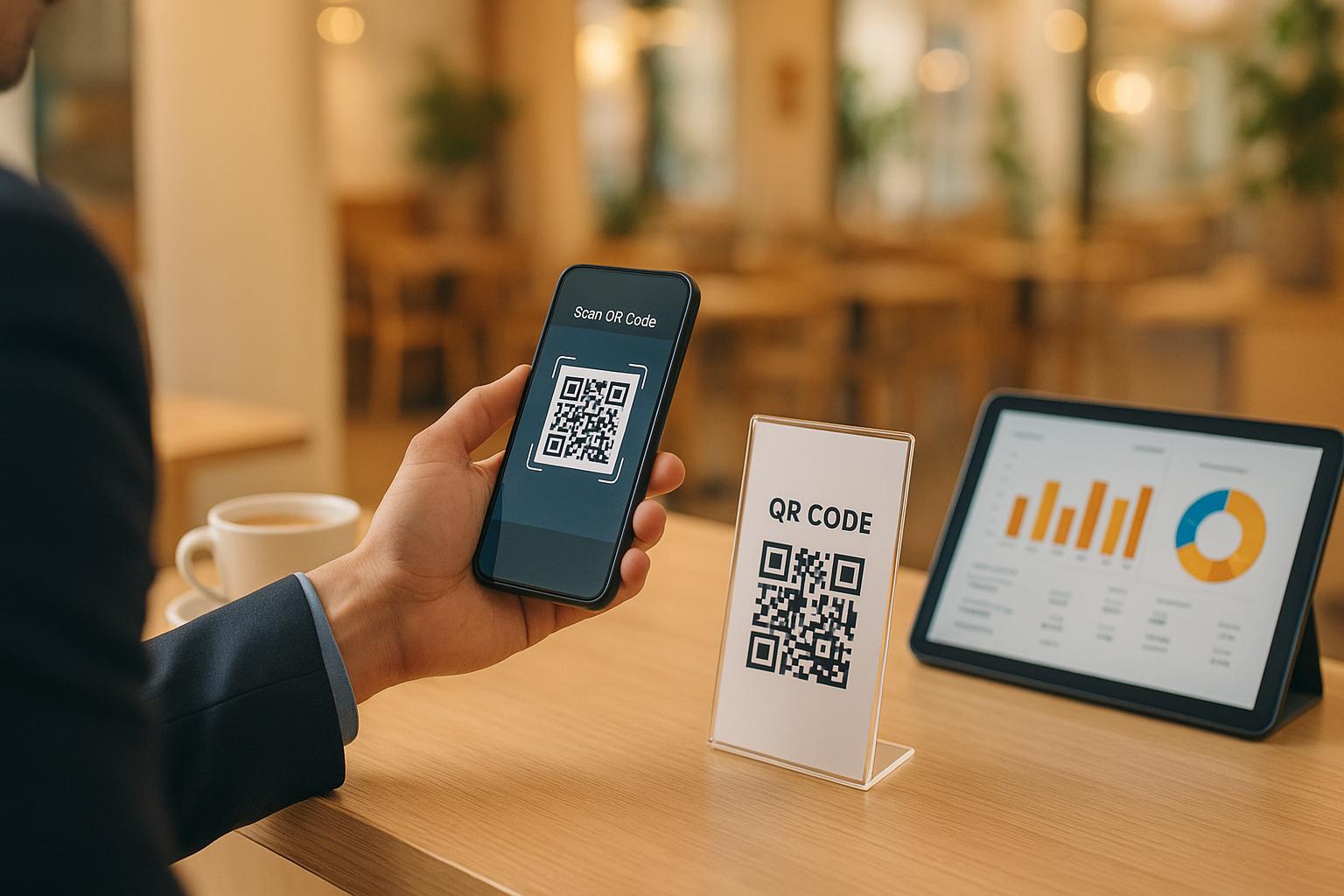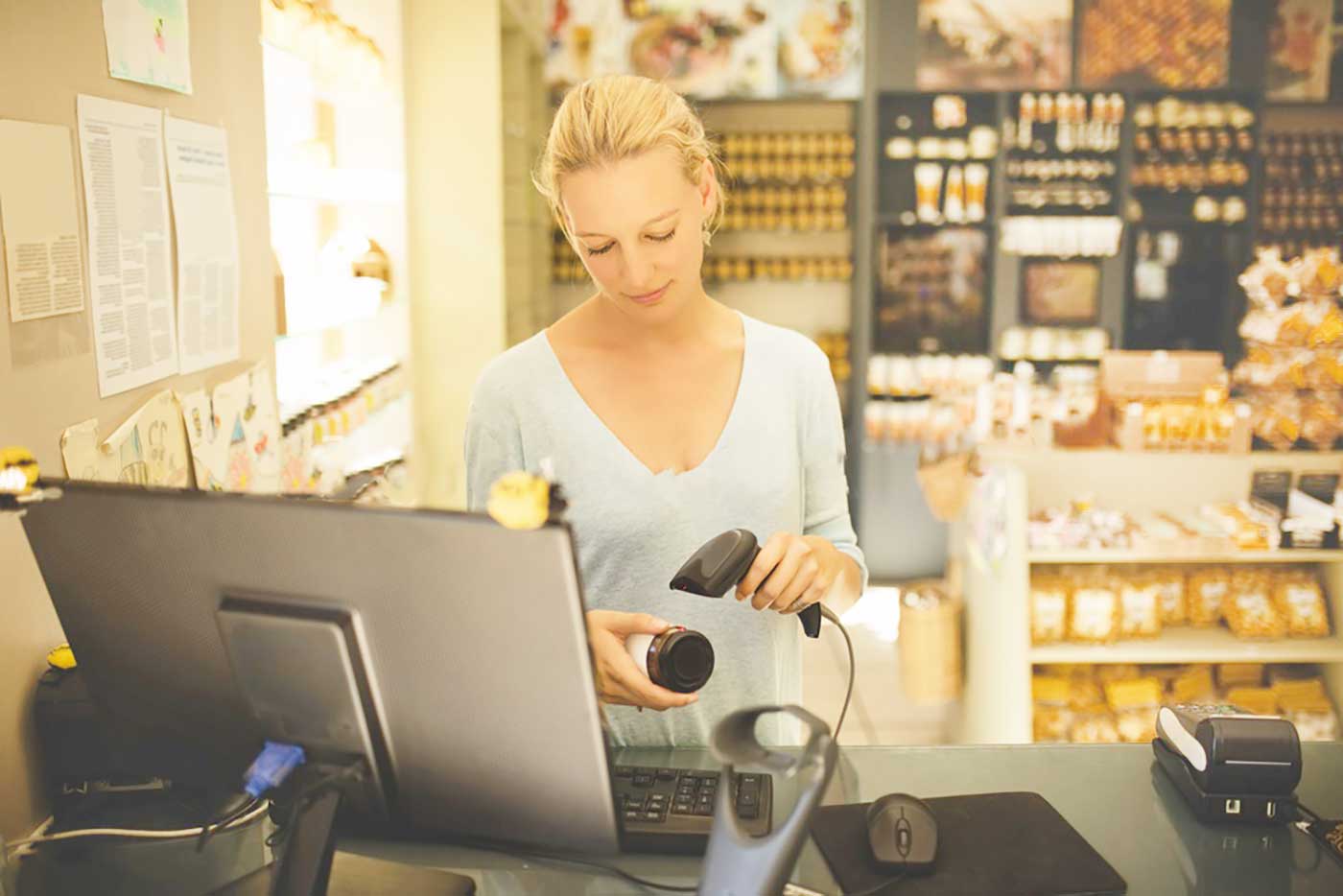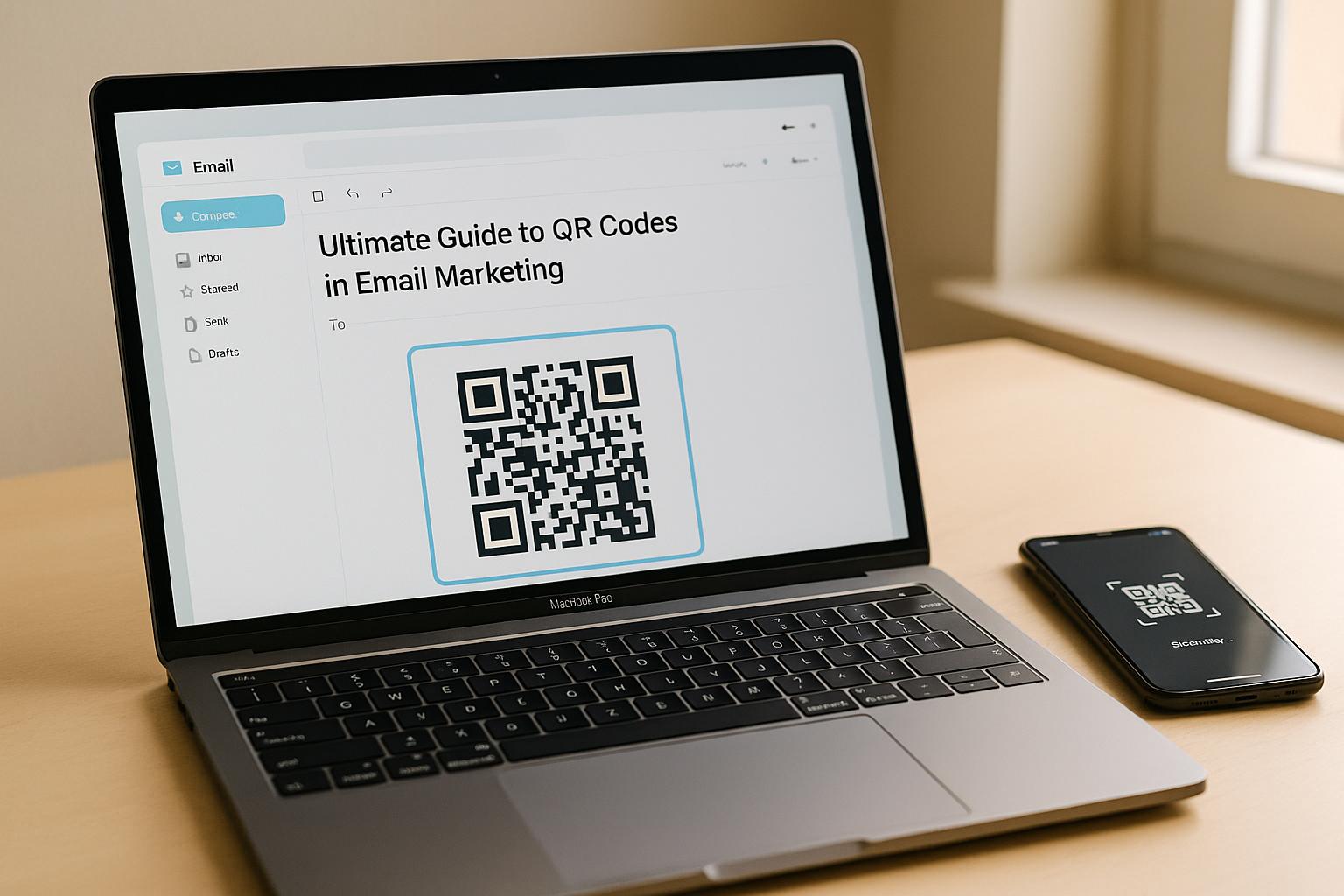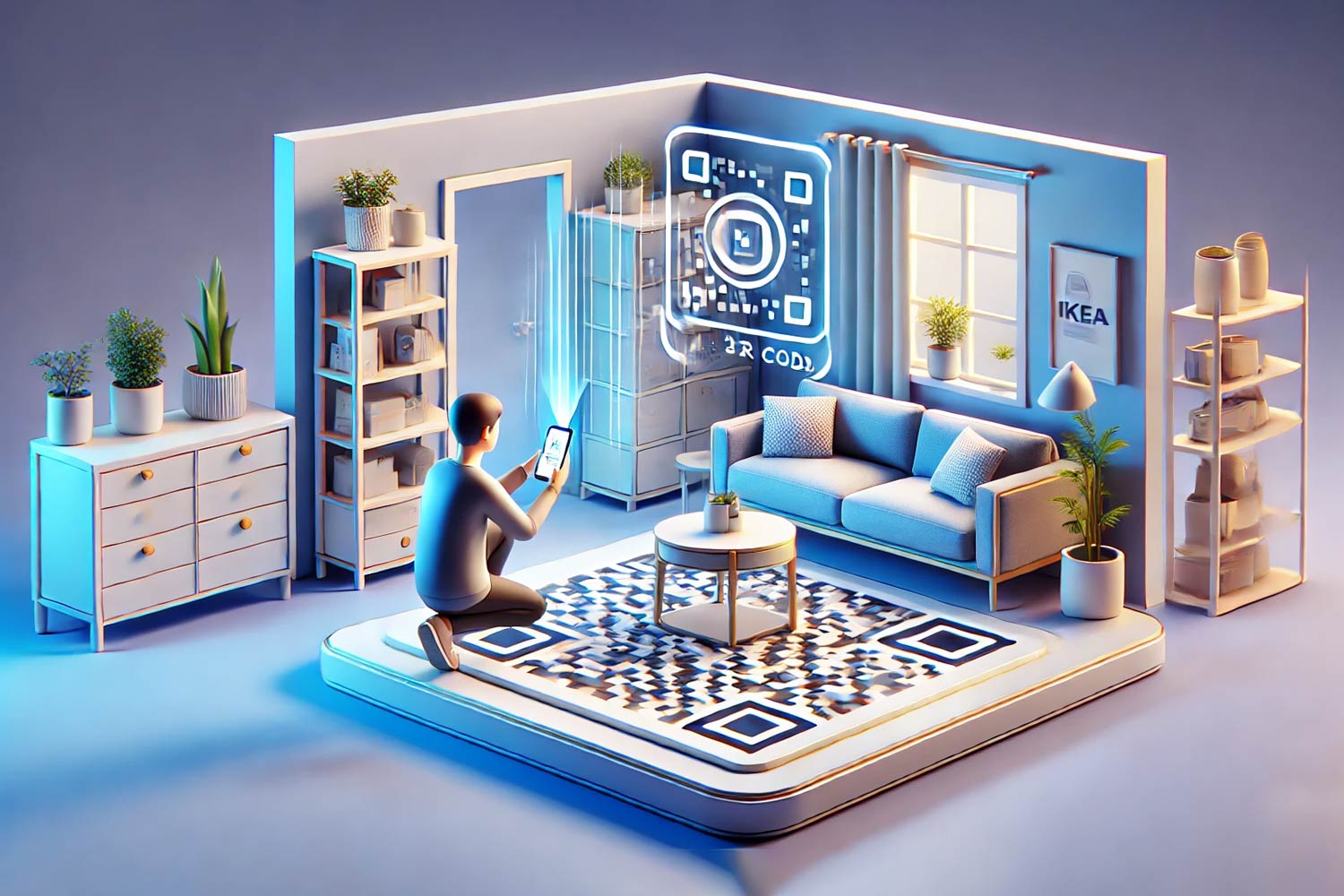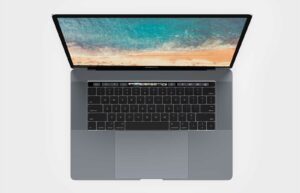QR codes are now an essential tool for connecting businesses with their customers. By 2025, they’ve evolved into a key part of customer engagement strategies, offering seamless ways to bridge offline and online experiences. Here’s a quick summary of how QR codes are transforming customer interactions:
- Daily Usage: 59% of consumers scan QR codes daily, with a 37% click-through rate – far higher than traditional ads.
- Revenue Growth: 58% of businesses report increased revenue from QR code integration.
- Data Collection: 95% of businesses use QR codes to gather first-party data, crucial in a privacy-focused world.
- Dynamic Experiences: QR codes adapt content in real-time, offering personalized interactions.
- Higher Engagement: QR-linked content achieves 3–4× better engagement rates than traditional marketing.
- Faster Mobile Access: QR codes provide instant, mobile-friendly experiences, improving conversion rates.
- Multi-Channel Integration: QR codes connect physical and digital marketing, boosting ROI by up to 300%.
Why it matters: QR codes are no longer just a convenience – they’re a powerful driver of customer engagement, data collection, and revenue. Businesses that embrace this technology are staying ahead in a highly competitive market.
QR Code Marketing: 5 Ways to Use QR codes In Your Next Campaign
1. Building Daily Habits Through Easy-to-Use Technology
QR codes have become a powerful way to encourage daily habits by relying on technology that most people already know and use. With built-in scanners available on 91% of iOS and 86% of Android devices, there’s no need for extra apps or complicated steps. This ease of use has driven rapid adoption – between 2022 and 2025, the number of U.S. consumers scanning QR codes with their smartphones is expected to grow by 16 million.
By simplifying everyday tasks, QR codes turn routine interactions into moments of engagement. This convenience has opened doors for creative business applications. Take Capitec, a South African bank, for example. In 2021, they introduced Capitec Pay Me, a feature allowing customers to make quick payments by scanning QR codes. The result? Over 2.5 million customers signed up within just one week.
The potential for habit formation extends across various touchpoints. For instance, Wi-Fi QR codes eliminate the hassle of entering long passwords, while vCard QR codes instantly save contact details, making everyday interactions faster and easier. These small conveniences encourage users to prefer QR-enabled solutions.
Businesses are leveraging this trend by embedding QR codes into their products and packaging. Whole Foods, for example, allows Amazon Prime members to scan a QR code at checkout to unlock a 10% discount. This transforms a routine payment into a rewarding loyalty experience. Similarly, Loops Beauty includes QR codes on its facemasks, giving customers access to tutorials, influencer reviews, ingredient details, and purchase options. These diverse applications make QR codes an integral part of everyday life.
The key to building habits lies in delivering immediate value. Scanning a code on product packaging to access user manuals, reviews, or special offers teaches customers to associate QR codes with useful, time-saving benefits. This positive experience encourages them to scan again in the future.
Dynamic QR codes take this personalization to the next level by adapting to user preferences and timing. For example, a restaurant’s QR code might display breakfast options in the morning and dinner specials in the evening, offering a tailored experience that feels genuinely helpful rather than promotional.
The results speak for themselves. With 80% of U.S. users trusting QR codes and scanning becoming second nature, businesses that integrate QR technology into customer interactions can deliver ongoing value, gain insights through data collection, and strengthen relationships. This seamless integration has the potential to outpace traditional engagement methods, making QR codes a cornerstone of modern customer interaction strategies.
2. Higher engagement rates compared to traditional marketing channels

QR codes have become a game-changer in customer engagement, outperforming traditional marketing channels by a wide margin. QR-linked content achieves 3-4x higher engagement rates compared to conventional outreach methods. This shift reflects how consumer interactions are evolving in a more connected world.
What makes QR codes so effective? Scanning is an intentional action, unlike the passive exposure of traditional ads. Sharat Potharaju, Co-Founder and CEO at Uniqode, explains:
"Most importantly, this engagement translates to measurable performance. QR-linked content generates 3-4x higher engagement rates than traditional outreach methods. The active nature of scanning – a deliberate customer choice rather than passive exposure – creates higher-quality interactions with more motivated consumers at precisely the moment they’re seeking information or experiences."
The numbers speak for themselves. Campaigns that incorporate QR codes often see a 14% scan rate, far surpassing the 0.01% click-through rate typical of digital ads. That’s a staggering 1,400x improvement, making it clear why businesses are weaving QR technology into their marketing strategies.
Real-world examples further illustrate the power of QR codes. BBQGuys, a U.S.-based grilling retailer, shattered their engagement goal by 1,925% by adding QR codes to their direct mail campaigns. They recorded 1,782 interactions – far exceeding their target of 88 – and saw a 16% increase in average order value, directly boosting their revenue.
The ability of QR codes to merge physical and digital experiences creates unique opportunities. For instance, HSBC partnered with Shelter, a UK homeless charity, to use QR codes in advertising placed in areas with high homelessness rates. The campaign promoted the "No Fixed Address" service and delivered remarkable results: bank accounts opened through the service increased by 52%, and 20% of QR code donors became regular supporters of Shelter.
Dynamic QR codes take engagement to the next level by offering personalized content based on factors like location, time, or a user’s previous interactions. This customization ensures that users receive relevant, timely information, making their experience more engaging and meaningful.
Another advantage of QR codes is their sheer convenience. They eliminate the hassle of typing URLs, especially on mobile devices. In fact, 84% of users interact with at least one additional resource after scanning a QR code. This seamless transition keeps users engaged longer, deepening their connection with the brand.
Take Time & Space’s campaign for Tourism New Brunswick as an example. By placing QR codes on direct mail flyers and CTV ads, they directed users to a contest landing page. The direct mail effort alone achieved an engagement rate of 1.77%, showcasing the effectiveness of QR codes in driving meaningful interactions.
Another standout feature of QR codes is their ability to capture real-time data. Unlike traditional print ads or billboards, QR codes collect insights at the exact moment of engagement. This instant feedback allows businesses to adjust campaigns on the fly, enhancing performance while campaigns are still active. It’s a perfect blend of actionable data and customer engagement.
To make the most of these benefits, businesses should focus on strategic QR code placement and compelling calls-to-action. Whether it’s on flyers or posters, clear instructions and a strong value proposition are key to motivating customers to scan. Ultimately, the goal is to make scanning feel rewarding and worthwhile, ensuring that customers stay engaged with your brand.
3. Direct data collection without third-party cookies
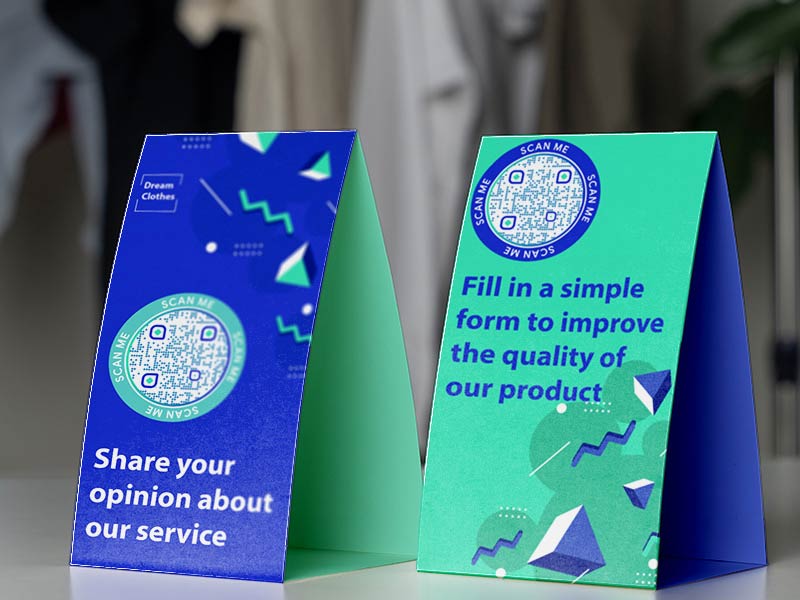
QR codes offer a straightforward and transparent way for businesses to collect first-party data. Unlike traditional tracking methods, QR codes rely on customer engagement and consent, creating an opt-in system that aligns with growing privacy concerns and stricter regulations. In today’s privacy-focused world, this approach provides a much-needed balance between data collection and user trust.
The potential for data collection through QR codes is immense. According to reports, 95% of businesses find QR codes useful for gathering first-party data. Nearly half of these businesses collect information from over 10,000 customer interactions. Each scan can reveal details like the time of interaction, location, type of device, and operating system – all from a single action.
Take Sephora, for example. They use QR codes to offer product details, tutorials, and even virtual try-on features. Every scan not only enhances the shopping experience but also provides insights into customer preferences and behaviors. Similarly, Nike integrates QR codes into their products to give customers access to exclusive content and effortless mobile shopping, all while collecting valuable data.
Dynamic QR codes take things a step further by capturing real-time insights. This allows businesses to monitor customer behavior as it happens, adjust campaigns on the fly, and create more personalized follow-ups. Importantly, QR codes do not automatically gather personally identifiable information. Data is only collected when users willingly share it through forms or landing pages. This ensures transparency, giving customers a clear understanding of what information they are providing and why.
For companies aiming to use QR codes while staying compliant with regulations like GDPR and CCPA, transparency is critical. Clearly explaining what data is collected, how it will be used, and allowing customers to control their preferences builds trust and ensures compliance.
QR codes also serve as an effective bridge between offline and online interactions. Whether featured on business cards, products, or even vehicles, they allow businesses to attribute interactions without relying on cookies, creating valuable opportunities for data collection.
A great example of this is McDonald’s contactless ordering system. By using QR codes for ordering and payments, McDonald’s not only reduces wait times but also gathers data on customer preferences, ordering habits, and behaviors – all with full consent. This data enables them to refine their services and deliver more tailored experiences, a concept explored further in upcoming sections.
When businesses provide meaningful value in exchange for customer data, they create a positive feedback loop that deepens engagement and fosters loyalty. This privacy-first approach positions companies to thrive in an increasingly regulated digital environment.
4. Custom customer experiences with dynamic QR codes

Dynamic QR codes are redefining how businesses interact with their customers by offering real-time content updates. Unlike static QR codes, which link to fixed destinations, dynamic codes allow content to change based on factors like location, time, device type, or even user behavior. This creates opportunities for tailored, personalized interactions that feel unique to each customer.
But customization doesn’t stop at content. By incorporating branding elements directly into QR codes – something 76% of consumers find appealing – businesses can build trust and strengthen recognition. This seamless blend of design and functionality not only enhances brand awareness but also keeps users engaged.
"Marketing teams that implement QR codes – especially if they use newer, dynamic QR code technology – gain significant competitive advantages in customer engagement, data collection, and revenue generation, transforming every consumer touchpoint into an opportunity for meaningful connection." – Sharat Potharaju, Co-Founder and CEO, Uniqode
Real-world examples show how effective these codes can be. Lionsgate’s localized film campaign, for instance, achieved over 12,000 interactions across 65+ cities. Similarly, Hong Kong’s M+ museum used dynamic QR codes to provide multilingual content, resulting in 148,000+ visitor engagements and 113,000+ unique interactions.
AI-powered dynamic QR codes take personalization even further by analyzing real-time data, such as geolocation or browsing behavior. For example, a skincare brand might adjust product recommendations based on the local climate, while a restaurant could update menu options depending on peak dining hours. Retailers can use the same QR code to show weekend promotions to one group and standard product details to another, depending on when or where it’s scanned. Even business cards can use dynamic QR codes to display different information for prospects versus existing clients or adapt to the user’s language based on location.
"A QR scan represents a deliberate action… This is why QR-initiated journeys have an average clickthrough rate (CTR) of 37% – a much higher engagement rate than stand-alone campaigns or channels." – Ektha Surana, Uniqode
Dynamic QR codes also let businesses maintain complete control over their branding. By using their own domain names and custom designs on linked pages, companies can ensure a consistent brand experience throughout the customer journey. From the moment a QR code is scanned to the final interaction, every step reinforces the brand’s identity.
To make the most of dynamic QR codes, businesses should regularly update their content and ensure that landing pages are mobile-friendly, fast-loading, and immediately useful. Whether placed on products, vehicles, or marketing materials, these codes provide a direct line to what customers need in the moment.
sbb-itb-74874c9
5. Increased revenue through connected touchpoints
QR codes turn virtually any physical surface into a potential sales channel, bridging the gap between offline interactions and online revenue opportunities. When someone scans a QR code on product packaging, business cards, or promotional flyers, they’re instantly connected to purchases, special offers, or loyalty programs. This simple action transforms everyday interactions into measurable sales.
The impact on revenue is hard to ignore. 62% of businesses predict higher sales by 2025, thanks to QR-driven strategies. QR codes often lead to high-intent interactions, delivering 3–4× better engagement rates compared to traditional methods. With a 37% click-through rate, they consistently outperform many digital marketing tools.
"The State of QR Codes report shows business leaders are realizing what we at Uniqode know: dynamic QR codes are a cost-effective and revenue-driving way to increase customer engagement and build brand loyalty."
- Sharat Potharaju, Co-Founder and CEO of Uniqode
Examples from industry leaders highlight the revenue potential. Verizon placed QR codes in stores during a smartphone promotion, which generated $35,000 in sales from just a $1,000 investment over one week. Similarly, L’Oréal used QR codes in their consumer goods campaigns, resulting in a 7% boost in consumer engagement with their products.
Building on the benefits of dynamic QR codes, their ability to make transactions seamless plays a critical role in driving sales. These codes allow businesses to update offers and content without reprinting physical materials, ensuring campaigns remain relevant. Whether displayed on vehicles, posters, or product displays, they can direct customers to seasonal deals, limited-time offers, or personalized product suggestions instantly.
Retailers are using QR codes strategically to maximize conversions. Some offer exclusive discounts to encourage immediate purchases, while others link to loyalty programs to promote repeat business. The flexibility of QR code solutions means that every touchpoint – whether it’s packaging, storefronts, or displays – becomes a chance to capture sales that might otherwise slip away.
Effective QR code campaigns deliver immediate value to customers while driving revenue. This could mean linking to size guides and reviews for e-commerce items, connecting diners to reservation systems for restaurants, or providing instant access to digital property catalogs for real estate listings. Each scan represents a customer actively seeking more information – an ideal moment to guide them toward completing a purchase.
6. Faster mobile experiences that improve conversion rates
When it comes to mobile experiences, speed is everything. QR codes not only meet customer expectations for quick access but also boost engagement and drive higher conversion rates. Here’s why that matters: 40% of visitors abandon websites that take more than three seconds to load, and nearly half expect a site to load in two seconds or less. QR codes cut through the delays by providing direct access to mobile-optimized content, skipping the need to type in URLs or navigate through apps.
Speed isn’t just a nice-to-have – it directly impacts conversions. Studies show that every 100-millisecond delay in page loading can slash conversion rates by about 7%. Retail giants have seen this firsthand. For example, Amazon found that a 100-millisecond delay could reduce sales by 1%, while Walmart discovered that shaving just one second off page load times increased conversions by 2%.
QR codes are a natural fit for creating faster mobile experiences. A single scan takes users straight to the content they need, instantly. This is especially valuable for time-sensitive situations.
"One of the simplest ways to expedite the restaurant experience, without sacrificing the quality of service, is through order and pay‑at‑table options like QR codes." – Afshin Yazdian, President, Merchant Solutions, Paysafe
The versatility of QR codes extends across industries. In healthcare, they guide patients directly to secure payment portals. In property management, QR codes on statements allow owners to quickly pay HOA dues, special assessments, or late fees. These fast, seamless interactions build trust and keep users engaged.
To fully capitalize on the speed and convenience that QR codes offer, it’s crucial to maintain fast load times and ensure the linked sites are mobile-friendly. QR codes should direct users to responsive, mobile-dedicated pages that make navigation simple and intuitive. In 2022, roughly 89 million U.S. smartphone users scanned a QR code, and that number is projected to surpass 100 million by 2025.
"A good landing page is one that is memorable and easy to use. People are scanning with smartphones, not desktops. If there’s friction, like a confusing page or too many steps, you lose them fast." – Benjamin Claeys, CEO of QR TIGER
Dynamic QR codes take this a step further by allowing real-time updates without the need for reprinting. Whether they’re on business cards, flyers, or product packaging, the design should use high contrast and proper sizing for quick and reliable scanning.
With over 75% of U.S. consumers preferring to pay bills digitally, QR codes are an ideal bridge between physical touchpoints and digital transactions. By combining speed with seamless functionality, businesses can capture opportunities that might otherwise slip away due to slow or complicated processes. QR codes offer a simple yet powerful way to keep up with today’s fast-paced, mobile-first world.
7. Multi-channel marketing integration and tracking
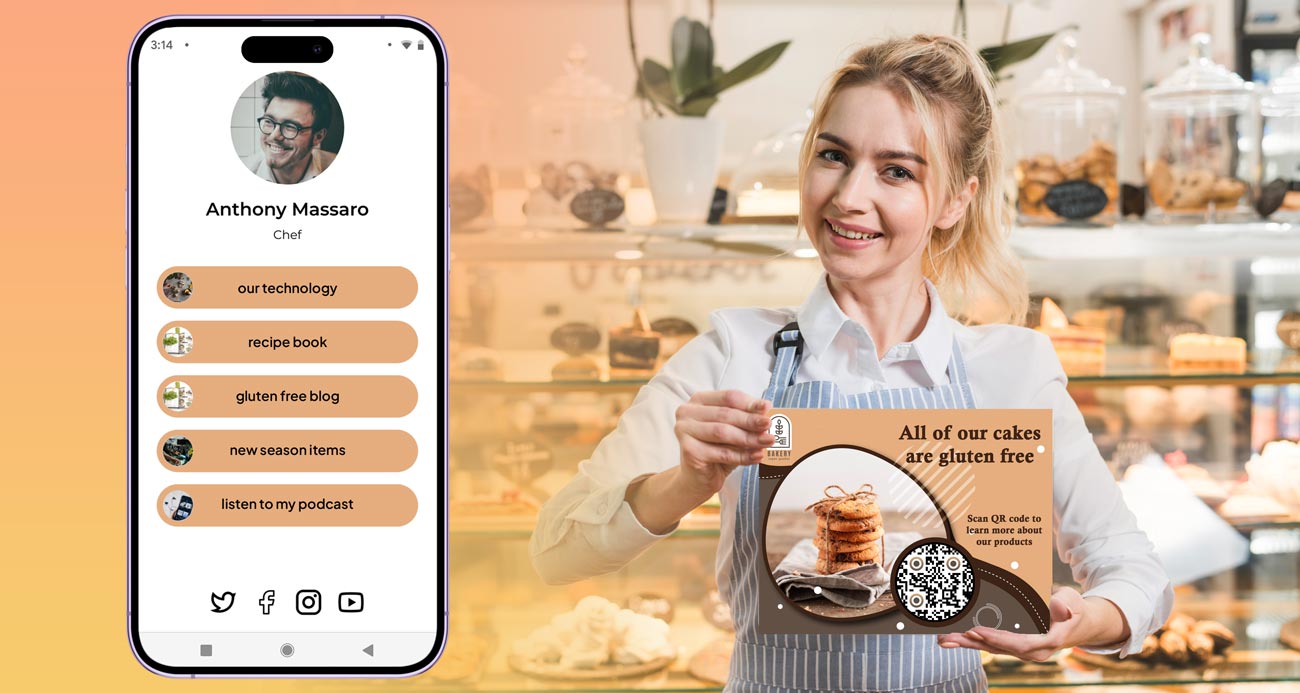
QR codes are a game-changer when it comes to linking different marketing channels, creating a seamless experience that meets customers wherever they are. In fact, integrating QR codes into multi-channel strategies can boost ROI by up to 300%. For businesses aiming to make the most of their marketing efforts, this approach is a smart move.
What makes QR codes so effective is their ability to connect the physical and digital worlds. Whether they’re featured on business cards, flyers, product packaging, or even shared on social media, these codes offer a smooth way for customers to engage. As this trend continues to grow, it’s clear that a well-thought-out QR code strategy is becoming essential.
Take Taco Bell’s 2012 Doritos Locos Tacos campaign, for example. They partnered with Frito Lay to include QR codes on taco holsters. Scanning the code led customers to a mobile-friendly page with games and sweepstakes, which were updated weekly to keep things fresh. Similarly, Netflix’s 2016 campaign for Gilmore Girls used QR codes on coffee cup sleeves in pop-up cafes, linking customers to exclusive Snapchat filters and creating a buzz across social media. These examples highlight how static QR codes can deliver big results, opening the door to even more dynamic possibilities.
Dynamic QR codes take things a step further by offering real-time updates and detailed tracking capabilities. For instance, fashion brand BruceGlen uses QR codes on clothing tags to share videos, styling tips, and sustainability information. These codes also provide valuable data, like scan locations, which help marketers identify high-performing stores or cities and adjust their strategies accordingly.
"Using QR Codes helps us have a more consistent customer experience across channels. It gives us the opportunity to seamlessly direct people from a retail store experience to our brand website, which is an important part of the customer journey." – Lauren Rothering, Senior Brand & Product Marketing Manager at Rad Power Bikes
QR codes also provide advanced tracking insights that aren’t available through traditional methods. A great example is the 2024 Paris Olympics, which used QR codes in their "Games Pass" system. This allowed real-time tracking of crowd movements and security checkpoint data as attendees moved between zones. Such detailed tracking helps businesses better understand customer behavior and fine-tune their marketing strategies.
To maximize the impact of multi-channel QR code campaigns, businesses should use UTM parameters to track traffic in Google Analytics and rely on dynamic QR codes for real-time updates. Testing QR codes across devices ensures they work flawlessly, while mobile-optimized landing pages provide the smooth experience customers expect.
"We added QR Codes to the back of our universal inserts that now go out in every new box we ship. Customers can scan the QR Code to adjust their subscription, add or remove products, or even direct message with a dermatology provider." – Becca Rudman, Brand Marketing Manager at Curology
QR codes are also effective at linking email campaigns to social media, direct mail to online experiences, and in-store visits to digital platforms. Since over 55% of consumers prefer email communication, incorporating QR codes into email campaigns can significantly boost engagement across channels.
The key to success lies in strategic placement and clear calls-to-action. Whether it’s a marketing agency or a restaurant, businesses are using QR codes to bridge physical and digital interactions. This not only provides valuable data but also creates the kind of connected experiences that drive real results. With faster mobile interactions and tailored content, multi-channel integration through QR codes is a powerful tool for boosting customer engagement.
Conclusion
QR codes have become a powerful tool for connecting the physical and digital worlds, driving measurable results across various marketing strategies. The examples and data shared earlier highlight just how impactful QR codes can be in modern campaigns.
With 59% of consumers scanning QR codes daily and QR-driven journeys achieving a 37% click-through rate – three to four times higher than traditional digital ads – businesses are seeing tangible benefits. In fact, 58% of companies report revenue growth from using QR codes effectively.
These codes turn static materials into dynamic, interactive experiences. Whether they’re featured on product packaging, business cards, or restaurant menus, QR codes provide instant access to valuable information, creating smoother customer interactions. Their versatility has fueled an impressive 88% year-over-year increase in QR code use within industries like consumer goods and retail.
"QR codes are a real-world call-to-action button, so use them to spark two-way engagement."
- Tara Robertson, Chief Marketing Officer, Bitly
Real-world case studies show just how effective QR codes can be. Some businesses have exceeded engagement goals by over 1,900%, while others have prevented significant losses by strategically using QR codes.
Looking ahead, the potential for QR codes continues to grow. 62% of businesses expect higher sales by 2025 through QR-centric campaigns, and projections suggest 99.5 million U.S. users will engage with QR codes by that same year. As technology advances, the integration of features like augmented reality promises even more exciting possibilities.
To make the most of QR codes, focus on strategic placement, dynamic features, and mobile-friendly landing pages. Start with a QR code generator that allows for real-time updates and tracking. Above all, ensure your QR codes deliver real value, rather than just redirecting users to generic pages.
"In a world where every interaction matters, a QR code’s simplicity, immediacy, and ability to cater to diverse needs position them as an instrumental solution to elevating digital customer engagement."
As outlined in the strategies above, QR codes offer measurable results across all customer touchpoints. Whether you’re a marketing agency, restaurant, or e-commerce business, QR codes are a key driver of customer engagement and business growth. Their role in shaping seamless, impactful interactions is undeniable.
FAQs
How do QR codes help businesses collect first-party data while maintaining user privacy?
QR codes offer businesses a straightforward way to gather first-party data while keeping the process transparent and easy for users. When someone scans a QR code, they have the option to share their details by engaging with forms, surveys, or exclusive offers. This ensures that data collection is consent-based and complies with privacy laws.
On top of that, QR codes can incorporate security measures like encryption to protect user data and block unauthorized access. This not only helps maintain user privacy but also gives businesses key insights to refine their services.
How can businesses use dynamic QR codes to create personalized customer experiences?
Businesses are finding dynamic QR codes to be a clever tool for creating personalized experiences and increasing customer interaction. Take gamified QR code campaigns, for instance. Some brands use these to offer rewards like free products or exclusive content when customers scan the code. It’s a fun approach that not only entertains but also provides valuable insights into customer preferences.
A standout feature of dynamic QR codes is their ability to update linked content in real time. This means businesses can adjust promotions based on details like where the customer is, when they scan the code, or even their previous interactions. This level of adaptability ensures that customers get content that feels relevant and engaging, turning standard marketing methods into more interactive and tailored experiences.
How can businesses use QR codes in multi-channel marketing to get better results?
QR codes bridge the gap between offline and online marketing, making it easier for businesses to engage customers and see better returns on their efforts. By placing QR codes on print ads, product packaging, or in-store displays, businesses can guide customers to online destinations like special offers, websites, or social media pages. This not only encourages instant engagement but also creates a smoother, more interactive customer experience.
On top of that, QR codes offer real-time insights into campaign performance. Marketers can track how often codes are scanned and what actions users take afterward, helping them fine-tune their strategies. They’re particularly effective in fast-paced settings like Connected TV (CTV) ads, where they turn passive viewers into active participants while delivering actionable data for future campaigns.

